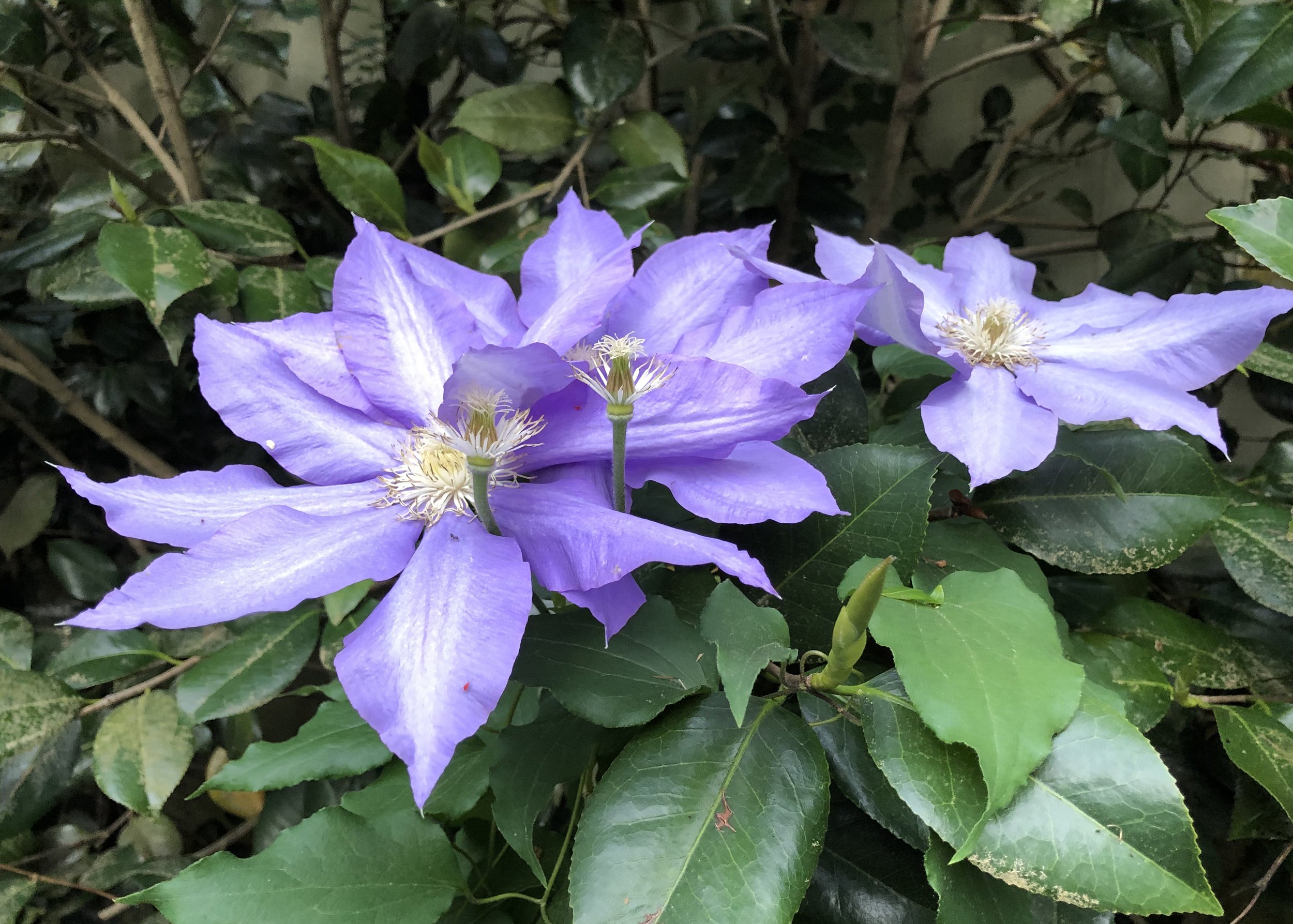Children of the Forest
Neal Porter Books / Holiday House • Available April 26, 2022
Grabbing a bow and quiver, a kid sets off, younger sibling in tow, to live off the land in the expanses of . . . their own backyard. “We are wild,” the brave explorer says. “We were raised by wolves. And raccoons. And owls.” The children manage to elude a savage puma (their cat) and outhunt a gigantic beast (their dog), but when an intruder (Mom) breaks into their camp, they must choose between Mother Nature and the mother who can tuck them in at night.
Roughing It
I had written this story just before the pandemic hit, and began illustrating as the virus was forcing families to stay home. Everyone in my neighborhood was walking more, spending more time in their yards. Kids were playing outside a lot. While I was painting, I remember thinking that scenes similar to what I was illustrating were probably being acted out in a lot of backyards. Of course, not all kids are lucky enough to grow up around trees, and have to work that much harder to imagine themselves into another place. I grew up out in the country, so I know vines and stumps. But this story could have just as easily been about a girl who grew up imagining her front stoop was a pyramid and wondering why the warehouse windows always seemed to be watching her.
I could have made up all the plants and animals, but that would have pushed the story too far into fantasy. So I spent a lot of time studying what actually grows around my North Carolina home. Even the bushes that come to life in the kid’s imagination are based on real plants.
I used pencil, ink, and watercolor, rather than my go-to medium of oil paint. The pencil allowed me to add all sorts of little twigs and tendrils, and watercolor has a randomness that settles into the paper in ways you can never totally control—sort of like my own backyard.
Scroll down to see a video of me trying to read the book, along with some early sketches and more clues as to how I made the book. Click on any image to enlarge it.
One of many photos I took to help me draw all the plants. Flowers are way harder to draw than hands, by the way.
Detail from We Send the Scavenger Woman Away • Watercolor and pencil. Click on the image to zoom in, to see how much of the pencil drawing is still showing through the watercolor. This helps everything feel more organic, as if child and nature are entangled, part of the same world.
Children of Mother Nature • Watercolor and pencil. All the animals and plants here can be found in my own yard. Even the stump with the fungus. And the pesky ivy.
Wild Puma! • Watercolor and pencil. The little sister is glad to be along on the adventure, as long as there are plenty of snacks.
It’s Either Him or Us • Watercolor and pencil.
In for the Night? • Watercolor and pencil. The stuff hanging on the string is their alarm system. Later, Mom will trip on it.
I Must Protect Sister • Watercolor and pencil. The art director, Jennifer, encouraged me to add a lot of details to the kids’ room, from toys to books, all of which were echoed in the story. Except maybe the penguin.
Don’t Look Now • Watercolor and pencil. This is the first illustration in the book, and already we get a clue as to where we really are. Hint: check out the white shape to the left.
Seeing Things • Watercolor and pencil. My rule was it at least had to be possible for the branches to grow into that unlikely shape (scroll down to see my first sketch).
Run! • Watercolor and pencil. One reviewer has guessed what the quiver was made from—a cardboard container of oats.
Foraging for Supplies • Watercolor and pencil. Note that the flowers inside the house match those outside, in Children of Mother Nature.
Detail from Making Camp • Watercolor and pencil. Note the sister’s cap, and her collection of leaves and flowers.
Original sketch for Children of Mother Nature. I was originally thinking of this more cartoony look, but that was pushing the story too far into fantasy.
Pencil drawing before applying watercolor to Children of Mother Nature. This method is nerve-wracking, because smudging or erasing too many times will make the watercolors muddy.
Pencil drawing before applying watercolor to Don’t Look Now.
Original sketch for Seeing Things. It was hard to find the balance between creature and a believable tree. What’s that horn made out of?
Pencil drawing before applying watercolor to Seeing Things. I adjusted the branches and leaves a bit. Still unlikely, but at least we can see how it could have grown that way.
Pencil drawing before applying watercolor to We Send the Scavenger Woman Away. This is the first time we get to see the entire backyard. Mom is already gathering up some of the mess the kids have made.
A watercolor sketch of the book jacket. This helped me figure out the colors, but mainly I needed to see how leafy I could make the title before it got lost in the trees.

